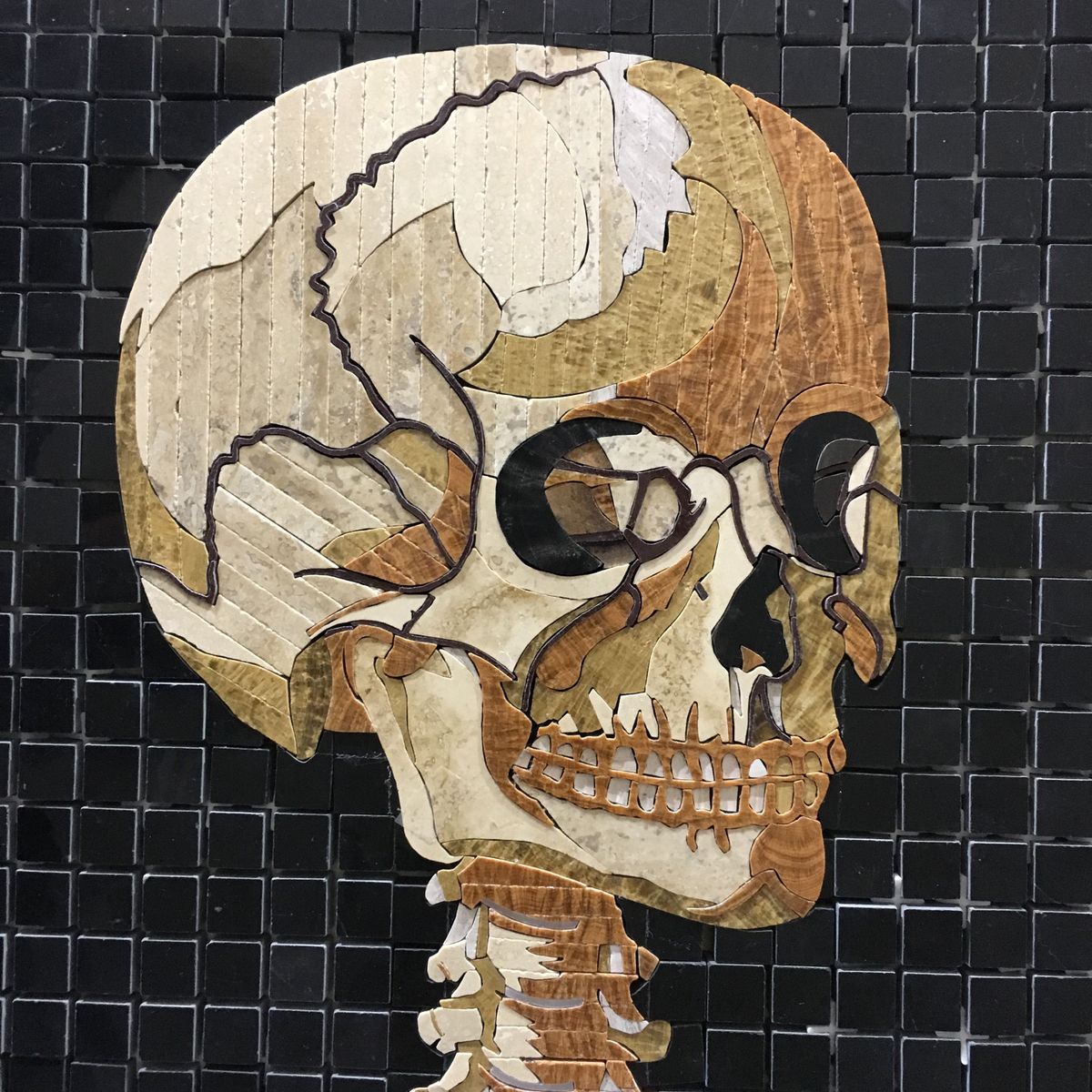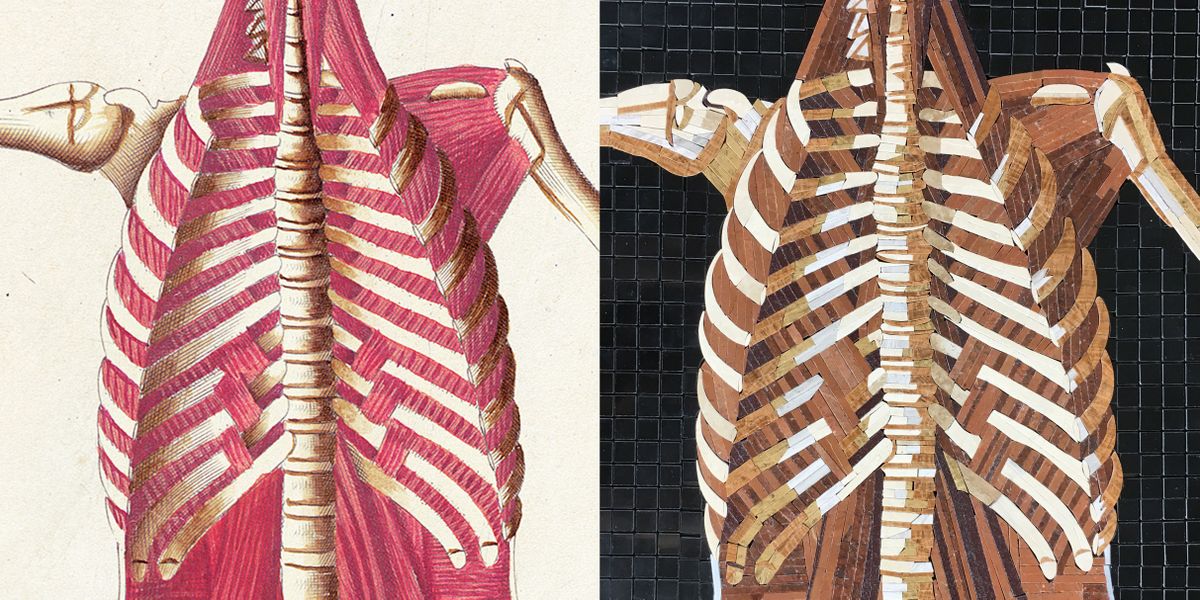Artist’s stone mosaics are life-size homages to Renaissance anatomist
Rachael Que Vargas's mosaics of human anatomy are made from bits of marble, travertine, onyx, limestone, lapis lazuli, red jasper, blue quartz, rose quartz and petrified wood. MUST CREDIT: Rachael Que Vargas (Rachael Que Vargas/Handout)
In the 16th century, Bartolomeo Eustachi helped found the field of human anatomy. He is known for his work describing the human ear (the Eustachian tubes, which regulate ear pressure, bear his name), but the Italian anatomist has been historically overshadowed by many of his scientific counterparts in the Renaissance.
The work of Rachael Que Vargas, an artist formerly known as John T. Unger, could change that. She’s working on a long-term project that renders Eustachi’s anatomical drawings in life-size stone mosaics.
Vargas has created 12 of an anticipated 22 mosaics, each showcasing human anatomy on an astonishing scale, for her “Anatomy Set in Stone” project, which had its genesis in 2005 when Vargas created a smaller, similar mosaic. Long fascinated by the ways science and art intersect, she kept returning to Eustachi’s drawings and began to ponder connections between their detailed views of the human body and nature.
“I simply realized that minerals and stone dug from the body of the Earth come in exactly the right colors to portray the interior of the human body,” she writes.
She uses stones such as lapis lazuli and red jasper to render the human circulatory system, hand-cutting long, thin strips of material with diamond blades. Some of the stones are only 1x1 millimeter, she writes – a level of detail that brings Eustachi’s drawings to life and pays homage to the intricacy of the scientist’s work.
Each of the 22 planned mosaics will be seven feet high and four feet wide and weigh between 300 and 350 pounds.

